You have no items in your shopping cart.
Do you have a project in mind but have no idea where to start? Let us help you. One of the first things you will want to do is decide what kind of fiberglass you want to use. Do you need to build up thickness fast? Are you concerned about strength? Do you have tight corners you are working with? Let us break things down a bit to help you decide if fiberglass cloth is right for your project or if you are needing chopped strand mat. Keep in mind that you can actually use both together to achieve your desired outcome. Below is an overview.
Fiberglass Cloth

(Plain weave fiberglass cloth)
Fiberglass Cloth is a woven fabric. Plain, 4 harness satin and 8 harness satin are the weave styles we carry. The 4, 6 and 10 ounce plain weave fabrics are the most commonly used. In this simple plain weave pattern, warp and fill yarns are interlaced over and under each other in alternating fashion. The plain weave is the easiest to handle since it does not unravel as much as the other weaves when cut.

In the four-harness satin weave pattern there is a three by one interfacing where a filling yarn floats over three warp yarns and under one.

The eight harness satin is similar to the four harness satin except that one filling yarn floats over seven warp yarns and under one. The satin weaves are slightly stronger and more pliable than the plain weave and are easier to conform to curved surfaces. They are more difficult to handle than the plain weave, though. Use fiberglass cloth when you are looking to create a strong, light weight product.

Chopped Strand Mat
Chopped Strand Mat (also known as fiberglass mat) has short strands of fibers held together with a resin binder. The fibers are randomly oriented. Mat is only compatible with polyester and vinyl ester resin. When resin is added to the mat, the binder dissolves and the fibers can be moved around. It is easier to conform mat to tight curves and corners than it is with weaved fabric. The reason chopped strand mat is not compatible with epoxy resin is because the binder holding the fibers together needs styrene to properly dissolve. Polyester and vinyl ester resins have styrene in them. (There are some places that sell chopped strand mat that is compatible with epoxy but it is hard to come by and much more expensive). Chopped strand mat is the least expensive fiberglass and is often used in mold construction or projects where thickness is needed. Mat is often used as the first layer (before the gelcoat) in a laminate to prevent print through. Print through is when the fabric weave texture shows through the resin. Chopped Strand mat does not have much strength. If you need strength you should choose a woven cloth or you could mix the two. Mat can be used between layers of woven fabric to help build thickness quickly and aid in all layers bonding well together.
For info on more fiberglass reinforcements and resin, check out our Ultimate Fiberglass and Resin Guidebook for Beginners.
For more detailed information on each fiberglass cloth we carry, you can CLICK HERE.
comments (57)
-

-
 Richard Halsey
Richard HalseyHi, I want to make a roof panel for my 100″ ex military landrover (very similar roof to a 90 Defender) I will make a ply/mdf female mould so the mould is the outside, maybe I should drop some top hat aluminium rails lengthwise onto the last coats of resin.? What would you recommend to use ie. type of resin including gel coat upwards and what type of cloth/mat. This will be my first large fibreglass project other than model making ..
Cheers Richard..REPLY from fgwarehouse: You should be able to use the ORCA 200, which is a general purpose laminating resin and chopped strand mat. A couple layers should do. You won’t be climbing on it, will you?
-
 Julian
JulianI’m going to be restoring an 80’s bowrider. I intend to use 3/4 standard plywood for the floors, and want a waterproof coating to lay carpet over. What is the least expensive way to accomplish this using your products? Also, if I decide to re-glass the stringers and the areas of the bilge, do you have any recommendations?
REPLY from fgwarehouse: Thanks for the question. I would recommend adding a layer of fiberglass and resin to the plywood. You can just seal it with resin, but if there is a ding or gouge, it would open up the plywood to get wet. Since the floor won’t be always wet, you can use Orca 200 General Purpose laminating resin and 3/4 oz Chopped Strand Mat. As for the stringers, I would use Orca 301 ISO Laminating resin and Knitted Fabric 1708. The ISO resin is a stronger resin and the 1708 is a strong thick fabric/mat hybrid. Typically two layers are used.
-
 Robb
RobbI am trying to build a new dashboard for my 79 Firebird. It has a lot of cutouts that I’m going to cover up. Once they’re covered, I am going to make a mold from it. I assume I would do that with CSM. After the mold, what weight and weave would you recommend? I was thinking a plain weave because the curves aren’t too aggressive but maybe a 4 or 8 harness would be more accommodating? Thanks so much!
REPLY from fgwarehouse: Most people would just use CSM for the dash also. If you want to cloth, then a combo of CSM and a layer of cloth will work well. The 4 and 6 oz plain weave are pretty good and complying to curved surfaces. The 4 and 8 harness satin weaves are very tightly woven and can be rather stiff.
REPLY from Robb: Okay, I’ll just use CSM for everything. Do you sell full kits or do I need to buy everything individually? Also, do I need to worry about mold release or gloss coat compatibility with my current dash that will become the base for my mold?
-
 John
JohnSo, which is better the two? The Fibermat or the Woven/Cloth in terms of making motorcycle fairings?
Thank You!REPLY from fgwarehouse: Most people will just use the chopped strand mat. Chopped Strand Mat


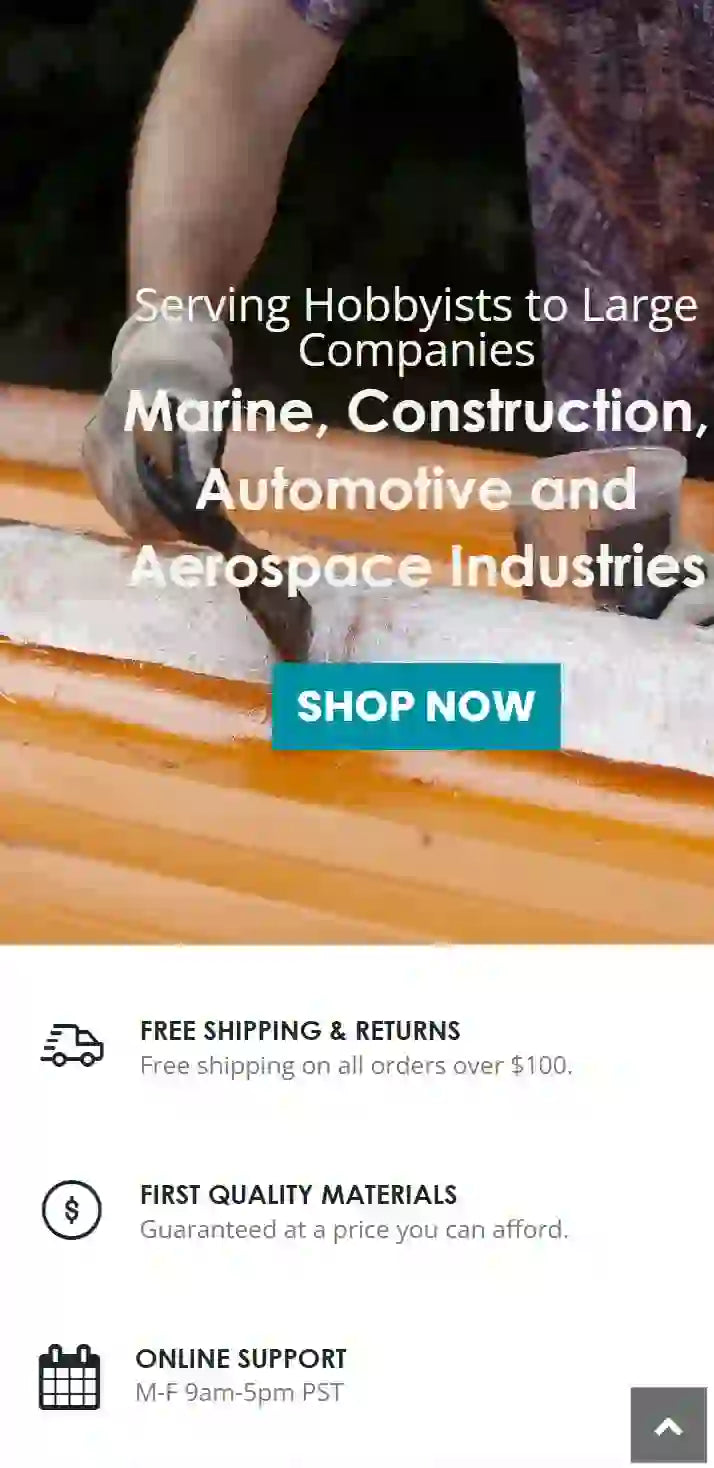

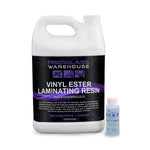
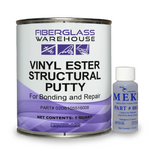
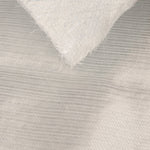
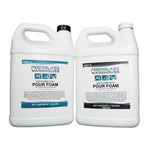


I have a two story shed that has a roof top patio with 4 foot parapet walls. The size is 16×12. I plan on fiberglassing up the parapet wall and also the wall cap. Do i need to worry about themal expansion. I plan to do a cold roof insulation, but that will be latter in the year or next year. What would you recommend as far as type, weight, # of layers and resin. Amount of cloth and resin and tools needed. I also would like non slip surface. I am ready to order needed materials and start. I have only ever made a few small panels before with a kit that was bought at auto parts store. The panels turned out great and have held up as they still look new, but this is a different beast all together. Thanks in advance!
REPLY from fgwarehouse: [16:00] Dave: Name : Dave
Email :
[16:00] Dave: Hello
[16:05] Dallin has joined the conversation
[16:05] Dallin: Sorry David, I’m here now
[16:05] Dallin: Let me read your last chat
[16:06] Dave: Ok
[16:06] Dallin: I have a two story shed that has a roof top patio with 4 foot parapet walls. The size is 16×12. I plan on fiberglassing up the parapet wall and also the wall cap. Do i need to worry about thermal expansion. I plan to do a cold roof insulation, but that will be latter in the year or next year. What would you recommend as far as type, weight, # of layers and resin. Amount of cloth and resin and tools needed. I also would like non slip surface. I am ready to order needed materials and start. I have only ever made a few small panels before with a kit that was bought at auto parts store. The panels turned out great and have held up as they still look new, but this is a different beast all together. Thanks in advance!
[16:08] Dave: The decking material is advantech.
[16:09] Dallin: So the fiberglass will be on one side of the parapet and roof?
[16:09] Dave: Yes and the cap around the perimeter
[16:11] Dallin: Is the purpose just to waterproof or to add strength also?
[16:11] Dave: I am building a bearthway hatch now that will be fiberglassed as well it is 3 feet x 5 feet and 30 inches wide
[16:12] Dave: Waterproof that can handle daily use by 2 people. Strength is important as well but not primary.
[16:13] Dallin: Let me look it up
[16:13] Dave: 2×10×12 on 16 with advantech osb floor
[16:14] Dave: Thank you
[16:15] Dave: I have been researching and it seems in europe CSM 450g 2 layers or 600g for walking is what they use.
[16:16] Dave: FROM WHAT I CAN FIND THAT IS EQUAL TO CSM 1 1/2 OZ AND 2 OZ. IF THAT MAKES SENSE.
[16:17] Dave: i am just not sure that will handle daily use. But what do I know.
[16:18] Dallin: For decks, you want 2 layers of 1.5 oz at least. Let me see if that converts to 450 g
[16:19] Dave: I want it to be strong and be able to handle use and 2 crazy dogs as well
[16:20] Dallin: If you really wanted to make it strong, use a layer of 1708 and a layer of 1.5 oz. That would make a very strong structure.
[16:20] Dallin: I would use ISO resin with it.
[16:21] Dave: Is iso a brand or type
[16:21] Dallin: ISO is a type. When looking at strength, you have ortho, ISO and Vinyl ester. It is good better and best.
[16:22] Dave: I had read vinyl ester is best for CSM
[16:23] Dallin: It is almost has the same strength and waterproofing as epoxy, but much less expensive. You can go wrong using it.
[16:23] Dave: But you recommend ISO
[16:24] Dallin: At least ISO. Most people don’t want to pay the extra for VE.
[16:24] Dave: I have not priced anything other than CSM
[16:25] Dallin: Most people will use the CSM and ISO resin. But if you want to add extra strength and better waterproofing, change one of the layers to 1708 Knitted fabric and VE resin.
[16:26] Dave: What about expansion? Some companys have expansion joints the run the interior deck to wall.
[16:27] Dallin: To tell you the truth, I don’t know. The VE resin has good elongation.
[16:27] Dave: So 1st layer 1708 and second layer 1 1/2 oz
[16:28] Dallin: Yes, so the 1708 has a layer of CSM and fabric stitched together. The CSM side goes down first. Then put the other layer of 1.5 over top. So the fabric is sandwiched between the CSM.
[16:28] Dave: So maybe no need for expansion joint along outside wall
[16:29] Dallin: Maybe, But I really don’t know.
[16:29] Dave: Ok I see, that is more of what i was wanting to hear
[16:30] Dave: The joints are like 150 bucks more or less
[16:32] Dave: The top outside wall is ballooned framed 12 foot 2×4 16 oc. The inside wall is also 2×4 16 oc tied together by 2×10.
[16:33] Dave: You can kick the wall like kicking in a door and get zero movement.
[16:34] Dallin: Sounds very sturdy
[16:34] Dave: How much resin would i need?
[16:35] Dallin: Let me calculate the weight of the cloth.
[16:35] Dave: I would like an estimate if possible.
[16:36] Dallin: So the over all size is 12×16?
[16:36] Dave: Yes
[16:38] Dave: 4 foot inside wall, 7 inch cap, + 18 sq ft for hatch
[16:38] Dallin: So you have a picture? I’m having a hard time understanding all the dimensions
[16:39] Dallin: Or do you know the total area that needs to be fiberglassed?
[16:40] Dave: No picture of roof area some from ground level and inside second floor
[16:43] Dallin: Ok, so the roof top patio is 12′ x 16′ and it has 4′ walls going around it?
[16:43] Dave: Yes
[16:44] Dave: With a 7 inch slope outward top
[16:45] Dave: 467 sq ft maybe. My figure includes 18 sq ft for hatch
[16:45] Dallin: Ok, I can work with that.
[16:48] Dallin: You will need to add sand to the gel coat to give it a non skid surface
[16:49] Dallin: File :
[16:50] Dallin: A cup per gallon
[16:51] Dave: Ok wow that VE is a hit.
[16:52] Dallin: Like I said, people don’t like paying for the VE. Where are you located? Maybe I can save a little bit more for you.
[16:52] Dave: Georgetown KY
[16:52] Dave: What about those rollers for the bubbles….sorry i am a noob at this.
[16:53] Dallin: You are putting a lot of fiber up there. It is more than 2 pounds per sqyd. You need almost 5 pound of resin per sqyd.
[16:53] Dallin: Yes, you will need rollers, squeegues, mixing cups etc.
[16:54] Dave: Wow 5 pounds per sqyd.
[16:54] Dallin: I would get some 1″x6″ and 1″x3″ and some corner rollers.
[16:55] Dallin: We could switch the 1.5 oz for 3/4 oz and not really see a difference in strength.
[16:56] Dallin: That would save you about $200
[16:56] Dave: Back to the expansion rate is that a factor?
[16:56] Dallin: All my other deck guys that I know of don’t worry about it. The resin should adhere and make it act like one piece.
[16:57] Dave: Ok.
[16:58] Dave: How much difference would it really be with 3/4
[16:58] Dave: You sell the roller as well
[16:59] Dallin: Yes.
[16:59] Dallin: It might be a 10% reduction in strength.
[16:59] Dallin: I have it all in the shopping cart if you want to call me
[16:59] Dave: Not a win or fail difference then
[17:00] Dallin: No, it really is neglible. The 1708 is very strong.
[17:00] Dallin: I will add a roll of 4″ tape
[17:01] Dave: And some of the strips for the floor joint….lol
[17:01] Dave: Ok sounds good
[17:02] Dave: Please do not forget the noobie discount…lol
[17:04] Dallin: I added a pail of acetone. You will need it.
[17:07] Dave: Ok….joint strips
[17:09] Dave: Please add 1 more of those and 5 yards to the fabrics
[17:10] Dallin: The roll of 1708 is 50 yards on it. It is cheaper to send the whole roll.
[17:10] Dave: Ok anything else?
[17:12] Dave: I will need a mask that i can get local i will assume
[17:12] Dallin: Yes, that would be easier. They should have them at your local hardware store.